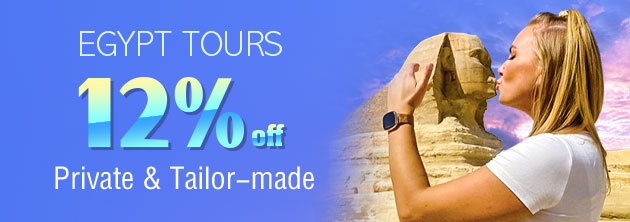Islamic Cairo
Islamic Cairo is an important part of Cairo. After Fatimid conquered Egypt in 969 AD, he built a new city as its capital. The city was named Al Qahira. From 750 to 868, it was the capital of Egypt. After a long time, the area developed into an Islamic territorial center, and as a result, some mosques and other Islamic landmarks were built there. It is for this reason that the area is called Islamic Cairo.Now, Islamic Cairo is no longer the center of Cairo, but it will always remind people of the city of the past. Although the current situation of Islamic Cairo is different from the past, hundreds of beautiful mosques and monuments still bear witness to its grand status.
So far, Islamic Cairo remains one of the most crowded areas in Cairo, and many monuments are reunited in the daily lives of thousands of Egyptians.
Islamic Cairo - Portrayal and overview

Egypt Islamic, Cairo
|
Highlights of Islamic Cairo: (Al-Muizz Al-Deen Street)
After the Fatimids took control of Egypt in 969 AD, the unused caliph Al-Muizz started an expansive building construction, repairing streets, renewing the capital city and reestablishing the canal framework on which the agriculture within Egypt was depending.The Fatimids built Al-Qahira to be equivalent to the capital of the Abbasid dynasty. Al-Muizz Al-Deen Street, named after the Fatimid Calif in Egypt, is the most important road through the city of Fatimid. After the Sunni Caliphs regained control of the city, Muizz Street still occupied an important position. After the Fatimids continued to advance, many residences, mosques, and landmarks of the rulers of Ayurveda, Mamluks, and footstools that controlled Egypt were built along this road through the city center.
Al-Muizz Street is still the most visible thickness of any Islamic vital attraction in the world. It is one of the most important foundations in Egyptian Islamic history. It runs through the center of Islamic Cairo, from Bab Al-Futuh in the north to Bab Zuweila in the south, and it is one of the foremost critical places in Egypt’s Islamic history with many amazing landmarks scattered along its length.
It is also the home of artisans who make products for sale in Khan Kalili. Walking through this street, you will reach a shopping gathering, which is an important part of any visit to Egypt. Al-muizz Street makes you try the experience of living in both Islamic Cairo’s history and the present-day city that exists nearby this maturing design.
Some of the famous landmarks of Al-Muizz Street are:

Glorious Monuments in Islamic Cairo
|
• Al Aqamar Mosque:
Al Aqamar Mosque is one of the most significant buildings of ancient Islamic Cairo down El Muizz Street. Al-Aqmar Mosque, which means the Moonlight Mosque, has many architectural highlights. It was the primary mosque in Cairo to utilize a balanced façade, while the rest of the building sits at a point, altering with the qibla, the course of supplication toward Mecca.• The Mosque of Sultan Al Mansur Qalawun:
The amazing Mosque of Sultan Qalawun was built along the celebrated verifiable road, El-Muizz Street. It was named for the two Fatimid Royal residences that initially stood here in 1284 by Sultan Al Mansur Qalawun. The Mosque had the ordinary Mamluks designing at that time. The exterior windows of the total complex are spurred from Gothic design, which Sultan Qalawun was commonplace with from the Crusader's churches mold of designing...The most famous constructions of Islamic Cairo:
Saladin Citadel: The improvement of the Cairo Citadel began in the 12th century with the ordinary Saladin of Ayyubid. These days, the castle provides a breathtaking view of the city, as well as many lecture halls for the Egyptian police and army. There are also three eye-catching mosques within the separation line: Al-Nasir Muhammed Mosque, Suleyman Pasha Mosque, and Alabaster Mosque in Muhammed Ali.Below the castle is the huge Sultan Hassan Mosque, built by a sultan of the same name in the 14th century. This huge mosque was built as a madrassa (sincere school), and in any mosque in the city, there have been several stunning first beautification designs. Ibn Tulun Mosque (Ibn Tulun Mosque) is an internal pedestrian area, separated by the castle and Sultan Hassan. It is a well-preserved mosque in Cairo. It was built when the Egyptian ruler came from Iraq.
Azhar Park may be an extension of Islamic Cairo. During the 1990s, the Egyptian government recuperated and was later used as a landfill to stop the city. These days, Al Azhar Park provides 74 acres of resting space in a city with little green space. The first-class environment offers wonderful views of the city and manicured gardens. There are also cafes and small restaurants.
Islamic Cairo as it Stands Today
The stark difference between downtown Cairo and Islamic Cairo is almost uncertain. In this medieval area, buildings owned by many residents are located near some of the most important mosques and landmarks in the world.This mix of relic and destitution does in any case loan the zone an awfully extraordinary and exceptionally special sort of charm. The individuals are neighborly and inviting, and a walk through the limit lanes will without question take off you with numerous valuable recollections. It’s a superb portion of Cairo to investigate and awesome for individuals observing as well as the local people go approximately their everyday exercises.

